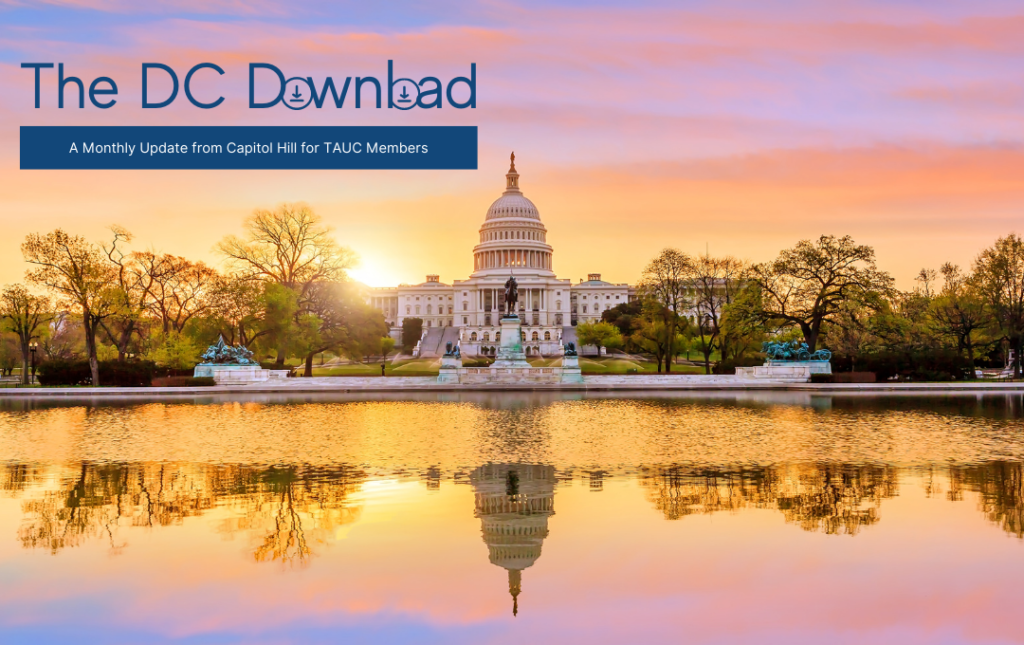- About
- Events
- News
Search Our Website

The D.C. Download, September 2022
September 19 2022
Government, Legislative Affairs, TAUC News
The Final Sprint Before the Midterms
After returning from the August recess, Congress faces a tight timeline to conclude several critical legislative priorities, including funding the government, providing emergency aid to natural disaster relief and public health initiatives, and reauthorizing the annual defense spending bill. Lawmakers plan to leave Washington at the end of September for the midterm elections. With limited progress on fiscal year 2023 (FY23) appropriations, despite movement in the House and draft bills in the Senate, Congress is preparing to enact a short-term stopgap measure to avert a government funding lapse at the end of the fiscal year.
Additionally, lawmakers are debating an energy infrastructure permitting reform bill that Senate Majority Leader Chuck Schumer (D-NY) committed to Senator Joe Manchin (D-WV) to secure his vote to advance the Inflation Reduction Act. Leadership aims to attach the legislation to the stopgap measure. Specific details of the permit reform package are not yet available. Schumer has indicated that it will likely be attached to the government funding bill.
Federal Agencies Propose Amendments to Federal Acquisition Regulations to Implement PLA Executive Order
The Department of Defense (DOD), General Services Administration (GSA), and National Aeronautics and Space Administration (NASA) – which make up the Federal Acquisition Regulatory Council (FAR Council) — issued a proposed rule to amend the Federal Acquisition Regulations to implement President Biden’s Executive Order (E.O.) requiring project labor agreements (PLAs) on federal construction projects with contract values of $35 million or more last month. Under the proposed rule, “Construction” is defined to include “construction, reconstruction, rehabilitation, modernization, alteration, conversion, extension, repair, or improvement of buildings, structures, highways, or other real property.” The NPRM also sets out a flow-down requirement, requiring subcontractors working on a large-scale project to be familiar with and comply with the terms of the PLA negotiated by a prime contractor.
While the FAR Council estimates that there are 119 federal construction awards annually valued at $35 million or more, the NPRM would provide exceptions from the mandate for projects if the agency determine that use of PLA would not:
- advance the federal government’s interests in achieving economy and efficiency in federal procurement due to the project being of short duration, lacks operational complexity, or will only involve one craft or trade;
- would substantially reduce the number of potential offerors to such a degree that adequate competition at a fair and reasonable price could not be achieved; or
- be inconsistent with other statutes, regulations, EOs, or Presidential memoranda.
The FAR Council estimates that exceptions may be granted for 10 percent to 50 percent of the large-scale Federal construction contracts awarded each year.
While the PLA requirement applies exclusively to large-scale projects, the proposed rule allows agencies to include PLA requirements for projects under the $35 million threshold if the agency finds it appropriate. The NPRM states that agencies may consider PLAs on projects below $35 million when:
- the project will require multiple construction contractors and subcontractors employing workers in multiple crafts or trades;
- there is a shortage of skilled labor in the region;
- PLAs have been used on comparable projects undertaken in the geographic area;
- a PLA will promote the agency’s long-term program interests.
The proposed rule is open for submission of comments until October 18, 2022. TAUC and the Construction Employers of America (CEA) will be submitting comments.
NLRB Proposes New Joint Employer Standard
Last week, the National Labor Relations Board (NLRB) issued a notice of proposed rulemaking (NPRM) in the Federal Register to revise the standard for determining joint-employer status under the National Labor Relations Act. The NPRM would rescind and replace a Trump-era rule Joint Employer Standards to restore the NLRB’s long-standing approach for making determinations regarding jointly employed workers. The NPRM would expand the factors that can establish a joint employment relationship to include indirect and unexercised control over the terms and conditions of a job.
TAUC has previously joined with the Construction Employers of America (CEA) in opposing the standard developed during the Trump Administration because it encourages employee misclassification and undermines the competitiveness of contractors who properly classify their employees.
Comments on the NPRM are due by November 7, 2022. TAUC and CEA plan to submit comments on the proposal.
PBGC Issues 2021 Projections Report
The Pension Benefit Guaranty Corporation (PBGC) released its FY21 Projections Report. The report illustrates a significantly improved financial situation for the Multiemployer Program, which received funding through the Special Financial Assistance (SFA) Program enacted in the American Rescue Plan (ARP) and favorable plan asset returns last year. Before the infusion of funding from the SFA Program, PBGC projected that its Multiemployer Program would become insolvent in 2026. Now, PBGC estimates solvency for another 40 years until 2061.
Senate Labor Panel Considers Nominee for DOL Wage and Hour Division
The Senate Health, Education, Labor, and Pensions Committee held a hearing on the nomination of Jessica Looman to serve as Administrator of the Department of Labor’s (DOL) Wage and Hour Division (WHD). President Biden nominated Looman in July after the Senate failed to confirm David Weil for the position. Looman previously served Commissioner of the Minnesota Department of Commerce and Executive Director Minnesota State Building and Construction Trades Council. Her nomination is strongly supported by union contractor associations. TAUC sent a letter of support for her nomination to the Committee. The Committee is expected to vote next week to send her nomination to the full Senate for confirmation.
Commerce Department Releases Implementation Plan for CHIPS Act
The U.S. Department of Commerce released its plan for implementing recently enacted CHIPS Act and how it plans to utilize the over $50 billion for the building, improvement, and expansion of domestic semiconductor manufacturing plants.
Under the plan, initial funding will be targeted towards smaller, simpler projects to expand facilities. Additional rounds of funding will target more complex projects for manufacturing of “leading-edge chips” that are not currently made in the U.S. Specifically, the plan allocates $28 billion for domestic production of leading-edge logic and memory chips, approximately $10 billion for new capacity to build current-generation chips and semiconductors, and $11 billion for a new National Semiconductor Technology Center, manufacturing institutes, and other development programs. These funds will be subject to Davis-Bacon prevailing wage requirements.
CHIPS also provided advanced manufacturing investment tax credits (ITC) to support the development of semiconductor manufacturing projects. These tools will be implemented by the Internal Revenue Service (IRS), and any project undertaken with the assistance of these tax credits will be subject to Davis-Bacon prevailing wage.
President Biden also issued an Executive Order encouraging that CHIPs investment “create well-paying, high-skilled jobs in construction, manufacturing, and maintenance.” The E.O. directs federal agencies to prioritize the generation of such benefits as “well-paying, high-skilled union jobs” and calls on agencies implementing this program to collaborate with labor unions and other worker organizations.
OSHA Construction PPE Fit Proposal
OSHA is preparing to issue an NPRM regarding requirements for the fit of personal protective equipment (PPE) in construction.” This proposed rule is part of an effort to ensure well-fitting PPEs for female construction workers. Currently, regulations require employers to provide such equipment but do not mandate standards for size and fit.
OSHA Overhauled Severe Violator Enforcement Program
OSHA has announced that it will change its enforcement policy expanding the criteria for placement in the Severe Violator Enforcement Program. OSHA uses this policy to focus enforcement and inspection resources on employers who either willfully or repeatedly violate federal health and safety laws or demonstrate a refusal to correct previous violations.
As a high-hazard industry, construction has been subject to this enforcement policy since it was established in 2010. The new policy would widen the scope of the program to include additional industries. The policy will also target violations of all hazards and OSHA standards, not just the failure to comply with a limited number of health and safety standards identified in the original policy. The program will continue to focus on repeat offenders.
Apprenticeship Updates
The White House announced the launch of the Apprenticeship Ambassador Initiative. The Initiative is a national network of more than 200 employers, industry organizations, labor organizations, educators, workforce intermediaries, and community-based organizations that aim to strengthen and diversify Registered Apprenticeship programs.
The U.S. Department of Labor (DOL) also announced the award of $50 million in Apprenticeship Building America grant funding for Registered Apprenticeship hubs. The Hubs assist employers in establishing and expanding registered apprenticeship programs in new and fast-growing industries and occupations. The program seeks to expand DOL’s efforts to increase the number of programs and apprentices, diversifying the industries that use the registered apprenticeships, and improving the access and performance of the programs serving underrepresented and underserved communities.
Finally, the Biden Administration is expected to finalize a rule to repeal Industry Recognized Apprenticeship Programs (IRAPs) in the very near future. IRAPs would have allowed for the creation of a parallel apprenticeship system, which could have potentially undermined existing privately funded Registered Apprenticeship Programs.

© Copyright 2025 TAUC. All Rights Reserved.
Site created by Top Shelf Design

